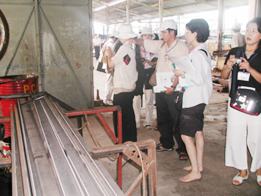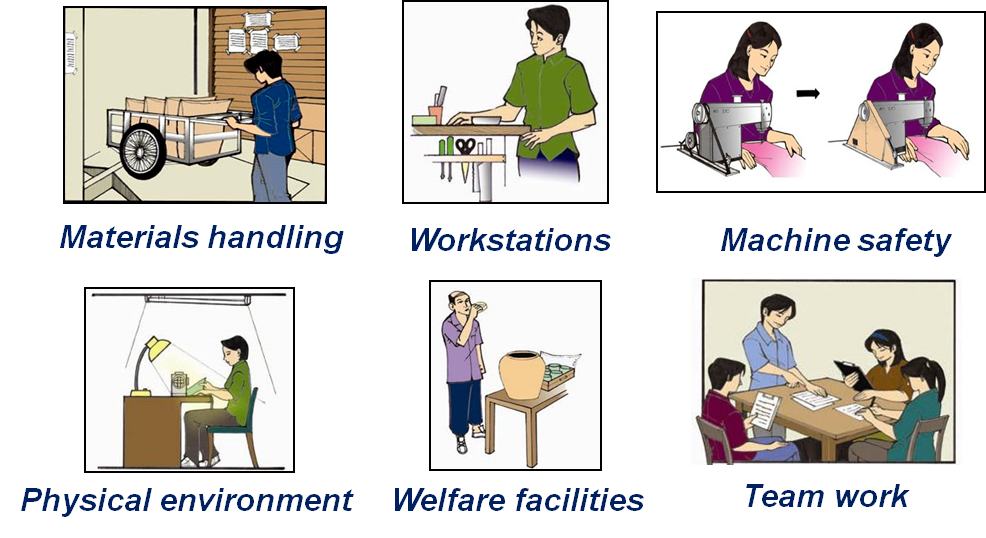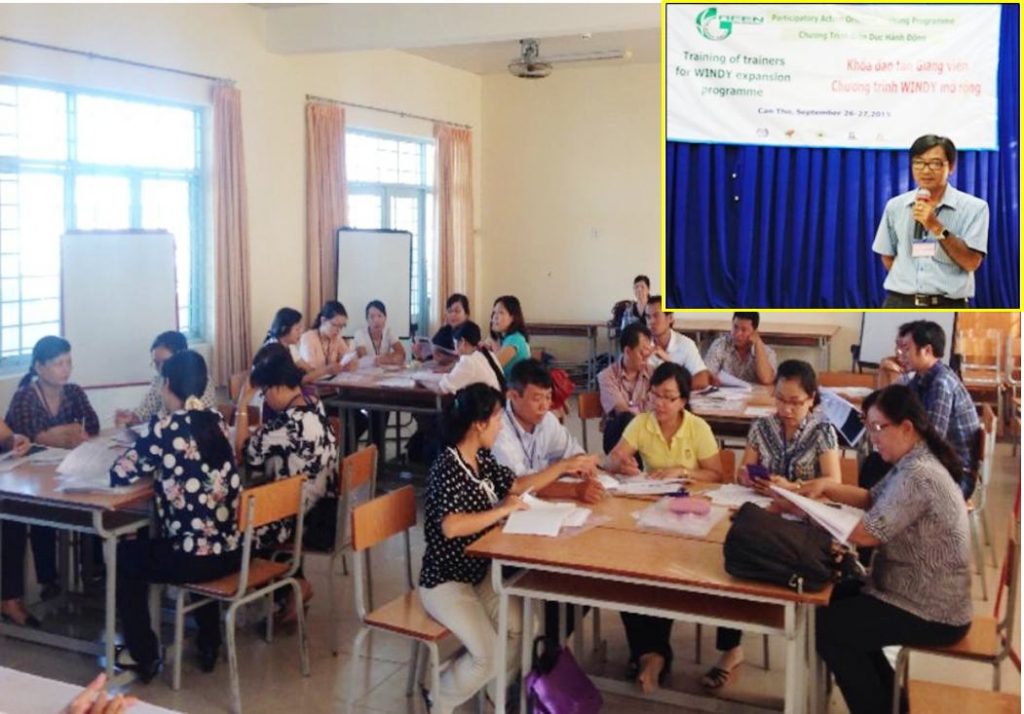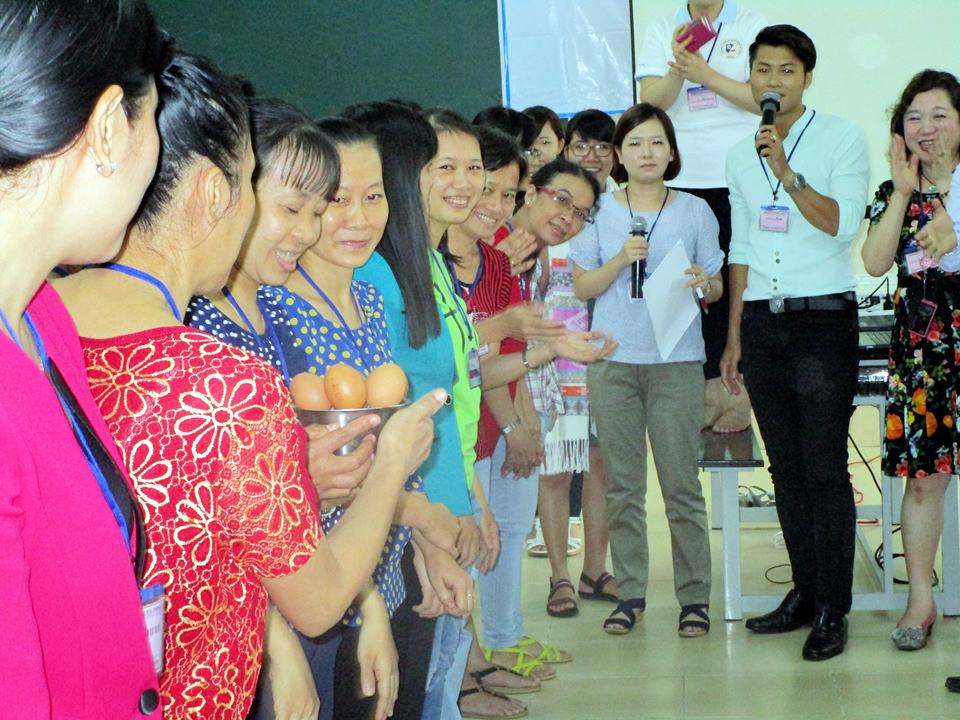It is necessary to prepare the workshop program carefully so that the participants can learn the practical ways to look at local good examples and make realistic proposals for improving the existing workplace conditions.
The preparation of a PAOT workshop includes the following:
- Preparing training materials (an action checklist, photographs of local good examples, presentation slides about technical areas, and action planning sheets);
- Recruiting participants from the target groups (e.g, small enterprises, farmers, trainers to be trained, volunteers interested in PAOT, etc.);
- Planning a place for the workplace visit including the checklist exercise;
- Preparing a workshop venue:
- Finalizing the workshop program.
Each PAOT workshop usually consists of the following participatory steps
| 1. |
| 2. |
| 3. Technical sessions on basic principles and good examples, e.g., Materials storage and handling, Workstation design, Machine safety, Physical environment, Welfare facilities and work organization, and |
| 4. |
| 5. Planning of follow-up activities |
Each of these sessions usually includes a presentation by a trainer, group discussion in small groups and presentations of the group work results.
1) Checklist exercise: By visiting a selected workplace, the participants make a walkthrough of the work area to be checked, observe the ongoing work processes and then fill in the checklist. Subsequently, the participants discuss in small groups three good points and three improvement actions for the workplace visited (Participants learn how to use the checklist).

2) Technical sessions: In each technical session, the trainer makes a presentation about basic ergonomic principles of each technical area also showing local good examples. Then the participants discuss in small groups three good points and three improvement actions in that technical area for the workplace visited (Participants learn basic principles and improvement options feasible in the local conditions). The results are presented.

Technical areas are:
- Materials handling and storage
- Workstations
- Machine safety
- Physical environment
- Welfare facilities and team work (Work organization and communication)
- Environmental protection (as an option)
Depending on the timeframe of the training program, some of these technical areas may be combined (e.g., workstation + machine safety, physical environment + welfare facilities or welfare facilities + work organization, etc.).
3) Special session on implementation: Hearing the hints for making realistic improvements, the participants discuss in small groups their final proposals about three good points and three improvements actions to be done at the workplace visited. The results are presented and discussed by all the participants.

4) Planning of follow-up activities: Separate groups of participants discuss plans for follow-up activities (e.g., improving selected workplaces, conducting short training sessions). The results are presented for final general discussion. Further, it is useful to insert, during the sessions, presentations of recent topical issues and brief physical exercises or games. It is highly recommended to evaluate the training before closing the workshop (e.g.) filling in of an evaluation sheet, feedback from some participants.

